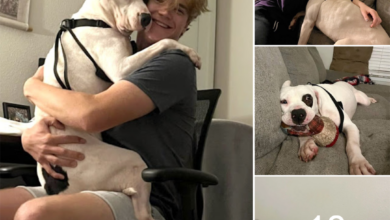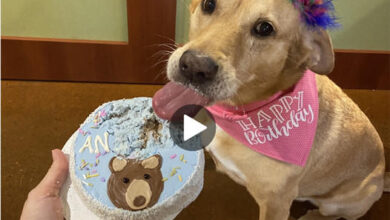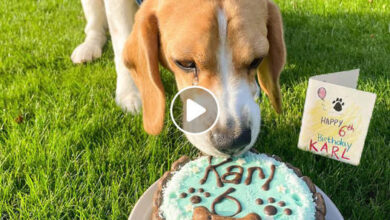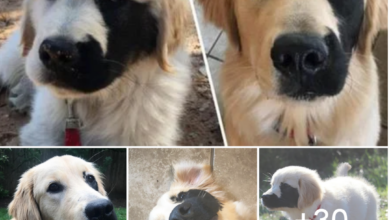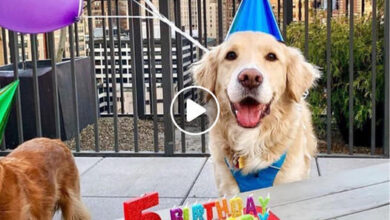Some Ways To Build A Bond With Your Dog

If you’re a dog owner, you know that build bond with dog can be incredibly special. But building and maintaining that bond takes effort.
It’s not enough to simply provide your furry friend with food, water, and shelter – you need to actively work on strengthening your relationship.
Fortunately, there are plenty of ways to build a strong bond with your dog, no matter their age or breed. From spending quality time together to using positive reinforcement techniques, this article will give you practical advice on how to create a lasting connection with your canine companion.
So grab some treats and get ready to take your relationship with your dog to the next level!
Spend Quality Time Together
You’ll deepen your bond with your furry friend by spending quality time together, whether it’s taking a leisurely stroll or engaging in a fun game of fetch. Playful activities aren’t only great exercise for your dog but can also help build trust and loyalty between you two.
Outdoor adventures, such as hiking or swimming, provide an opportunity to explore new environments and create lasting memories.
When spending time with your dog, make sure to give them your undivided attention. Put away any distractions and focus on connecting with them through play and exploration. This won’t only strengthen the bond between you two but will also improve their behavior and obedience.
Incorporating play into your daily routine is essential in building a strong relationship with your dog. Consistency is key when it comes to bonding with your furry friend. So take the time each day to engage in playful activities that both you and your dog enjoy.
Using positive reinforcement techniques can further enhance this connection, which we’ll discuss in the next section about using rewards-based training methods.
Use Positive Reinforcement Techniques
By using positive reinforcement methods, your furry friend will feel loved and appreciated. Reward-based training and treat training are two examples of positive reinforcement techniques that can help you build a stronger bond with your dog.
These methods not only encourage good behavior but also create a fun and enjoyable experience for both you and your furry companion. Reward-based training involves giving your dog something they enjoy after they have exhibited good behavior. This could be anything from verbal praise to a favorite toy or treat.
By rewarding good behavior, you are reinforcing the desired action and encouraging your dog to repeat it in the future. Treat training is another form of positive reinforcement that uses food rewards to motivate dogs to learn new behaviors.
Using positive reinforcement techniques can help improve communication between you and your furry friend. By rewarding good behavior, you are sending clear signals about what actions you want them to continue doing. This helps build trust between you and your pet, as they begin to understand what is expected of them in certain situations.
Effective communication is key to building a strong bond with your dog, so be sure to use positive reinforcement techniques consistently. In order to communicate effectively with your dog, it’s important to take the time to understand their body language and vocal cues.
In the next section, we will discuss some tips on how to better interpret these signals from your furry friend.
Communicate Effectively
Understanding your dog’s body language and vocal cues is crucial in establishing a strong connection with them. Dogs communicate through their body language, such as wagging tails, raised fur, and tilted heads. They also use vocal cues like barking, growling, and whining to express themselves. By learning how to read these signals correctly, you can understand what your dog is trying to convey.
One effective way to communicate with your dog is by using positive reinforcement training methods. These techniques involve rewarding good behavior instead of punishing bad ones. This approach helps build trust between you and your furry friend while encouraging them to repeat desirable actions. Positive reinforcement training includes giving treats or praise when your dog follows a command or displays good behavior.
Another important aspect of effective communication is recognizing when your dog may be feeling anxious or scared. Some common body language cues include cowering, hiding behind objects, or excessive panting. When you notice these signs, it’s essential to provide comfort and reassurance rather than scolding or punishing them for their behavior.
Understanding the importance of communicating effectively with your dog is crucial in building a strong bond between the two of you. By using positive reinforcement training methods and recognizing their body language cues, you can establish a trusting relationship that will last a lifetime. Practice patience and understanding as you continue to develop this connection with your furry friend.
Practice Patience and Understanding
When it comes to training your dog, patience and understanding are key. Take the time to be patient during training sessions, as dogs can pick up on frustration and anxiety.
It’s also important to understand your dog’s unique needs and personality, as this will help you tailor your training approach to suit them best. By accepting their individuality and working with them at their own pace, you’ll build a strong bond with your furry friend that will last a lifetime.
Be Patient During Training
Training your dog requires patience, but the bond you’ll build is worth it. When training your dog, it’s important to remember that they won’t learn everything overnight.
Reward-based training is a great way to teach your dog new commands and tricks. Positive reinforcement will encourage your dog to repeat good behavior, and with consistency in commands, they’ll eventually understand what you want them to do.
During training sessions, it’s important to be patient and avoid getting frustrated. Dogs are sensitive creatures and can pick up on our emotions easily. If you become angry or annoyed during training, your dog may become stressed or anxious which can hinder their learning progress.
By remaining calm and consistent with rewards and commands, you’re more likely to see improvements in their behavior over time. Understanding your dog’s needs is another essential aspect of building a strong bond between you two.
Understand Your Dog’s Needs
Now that you’ve learned the importance of patience during training, it’s time to delve deeper into understanding your dog’s needs.
Every dog is unique and has its own personality, which shapes their behavior and how they interact with their environment. Understanding your dog’s breed characteristics can be an excellent starting point in determining what they need from you.
For instance, some breeds are known for being energetic and require plenty of exercise to remain healthy and happy. Others may be more relaxed and enjoy lounging around the house all day long. It would help if you observed your dog closely to determine what they like and dislike, as well as what triggers certain behaviors.
By doing so, you can adjust your approach accordingly and create a stronger bond with your furry friend.
Understanding your dog’s behavior is not only essential for building a bond but also for ensuring their overall well-being. Knowing what makes them happy or stressed can help you provide them with the necessary care and attention they need to thrive.
Therefore, it’s crucial to take the time to learn about your dog’s needs so that you can tailor your interactions accordingly. After all, every interaction counts when building a strong relationship with our four-legged companions.
As you continue on this journey of bonding with your furry friend, it’s vital to remember that acceptance is key. In the next section, we’ll discuss how accepting their personality will further enhance this bond between you two.
Accept Their Personality
To truly connect with your furry friend, it’s important that you embrace their unique personality and quirks. Just like humans, each dog has their own distinct characteristics that make them who they are.
Some dogs may be more outgoing and social while others may be more reserved and independent. Understanding your dog’s behavior is key to building a strong bond with them.
Embrace quirks such as barking at strangers or being fearful of loud noises. These are all part of what makes your dog special and different from any other pet out there. By accepting these traits, you show your dog that you love them unconditionally for who they are.
This will help build trust between the two of you, making it easier for your pup to open up to you in the future. With this foundation in place, you can move on to showing physical affection towards your furry companion.
Show Physical Affection
When cuddling with your furry companion, make sure to stroke their fur gently and whisper sweet nothings in their ear to show them how much you love them. Physical affection is a crucial part of building a strong bond with your dog.
Cuddle sessions and grooming rituals not only help you connect with your pet but also promote feelings of trust and security.
To maximize the benefits of physical affection, try incorporating these techniques into your routine:
- Give belly rubs: Most dogs love having their bellies rubbed, so take advantage of this opportunity to show your pup some love.
- Use calming scents: Aromatherapy can be a powerful tool for creating a relaxing environment during cuddle time. Try using lavender or chamomile essential oils to soothe both you and your pet.
- Practice massage: Just like humans, dogs can benefit from massages too! Learn some basic techniques for massaging different parts of your dog’s body and incorporate it into your grooming routine.
Providing physical affection is just one way to build a strong bond with your furry friend. In the next section, we’ll discuss ways to provide mental stimulation that can further enhance the connection between you and your dog.
Provide Mental Stimulation
Let’s spice up your dog’s life by giving them some mental exercise! Just like humans, dogs need to stay mentally stimulated to prevent boredom and destructive behavior.
Engage in interactive play with your furry friend by playing games like hide-and-seek or teaching them new tricks. This not only provides mental stimulation but also strengthens the bond between you and your pooch.
Another way to provide mental stimulation is by giving your dog puzzle toys. These toys challenge their problem-solving skills and keep them occupied for longer periods of time. There are many different types of puzzle toys available on the market, from treat dispensers to interactive puzzles that require a series of actions to complete.
By providing both physical affection and mental stimulation, you can create a deeper connection with your canine companion. However, it’s important to maintain consistency in their routine as well.
In the next section, we’ll discuss how consistency plays a crucial role in building a strong bond with your pup without disrupting their daily routine.
Maintain Consistency
After providing mental stimulation to your dog, the next step in building a strong bond is to maintain consistency. Dogs thrive on routine and knowing what to expect from their owners.
Establishing routines for feeding, exercise, and playtime will help your dog feel secure and develop trust in you as their caregiver. Clear communication is also essential in maintaining consistency with your dog. Use consistent cues for commands and rewards, and be sure everyone in the household is on the same page with training methods. This will prevent confusion and frustration for both you and your pup.
To further emphasize the importance of consistency, here are four ways it can positively impact your relationship with your furry friend:
- Consistency builds trust: When you consistently provide for your dog’s needs, they learn that they can rely on you as a caregiver.
- Consistency improves behavior: By establishing clear expectations through routines and training methods, dogs are more likely to exhibit good behavior.
- Consistency reduces anxiety: A predictable routine helps dogs feel less anxious or stressed since they know what to expect from their environment.
- Consistency strengthens bonds: When dogs feel secure and confident in their relationship with their owner, they’re more likely to form a strong bond built on mutual trust and respect.
Conclusion
Congratulations! By reading this article, you’ve taken the first step towards building a stronger bond with your furry friend.
Remember, building a strong relationship with your dog takes time and effort, but the rewards are immeasurable.
One of the most effective ways to bond with your dog is by spending quality time together. Whether it’s going for long walks or cuddling on the couch, making time for each other will strengthen your connection.
Additionally, using positive reinforcement techniques and maintaining consistency in training will help build trust and respect between you and your pup.
But don’t forget about mental stimulation! Providing toys and puzzles that challenge your dog’s mind will not only improve their cognitive abilities but also provide an opportunity for bonding through playtime.
And don’t underestimate the power of physical affection – belly rubs and ear scratches can go a long way in showing your pup how much they mean to you.
In conclusion, building a bond with your dog requires patience, understanding, and consistent effort. But with these tips in mind, you’ll be well on your way to creating a lifelong friendship that’s full of love and joy.
So what are you waiting for? Get out there and start bonding with man’s best friend – it’ll be worth every tail-wagging moment!
Read more:
